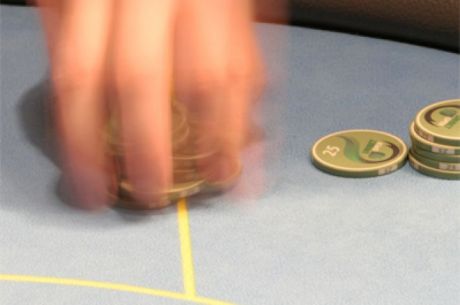How to Play in Position in No-Limit Hold’em

In no-limit hold’em, playing hands with position on your opponent is much more favorable than the alternative. When last to act, you get to see what your opponents’ actions are before having to decide what you’re going to do, thereby giving you more information when acting than is had by those playing from out of position.
I’ve divided this introduction to playing no-limit hold’em in position into two sections — preflop and postflop. Both are equally important, so make sure you pay attention to both aspects when incorporating them into your play.
Preflop play
Arguably, preflop position play is a lot easier. The best place to be is on the button, getting to see all but two of the other players at the table act before you’ve even had to look at your own cards. Failing that, being situated in the blinds is even later position before the flop, so this means more players acting before you. But be warned, if you decide to play your hand from the blinds, you are typically going to be out of position postflop.
In order to ascertain what we mean about playing in position, we have to decide whether or not we are playing against all of the other players at the table, or just one. Perhaps there is one aggressive player who you know opens widely, and you are looking to use your position to three-bet your opponent with strong holdings after he opens. Alternatively, you may have a tighter player to your right, and you know that if that player opens you need to narrow your starting hand requirements considerably in order for you to be able to call or raise the tight player’s opening bet.
On the other hand if you’re playing against the table, the adage is “The later, the better.” From the button you will not only be in position on all but the blinds preflop, regardless of what happens preflop (providing you are still in the hand), you will be in position on every street postflop.
Other players are aware of this, and this sometimes leads to those in the hijack or cutoff seats to open-raise in order to “buy the button.” Position is power in poker, making such attempts to “steal” the button well worth it in order to enjoy a postflop advantage.
Postflop play
Like I said, after flop the best position to be is the button, especially in a multi-way pot. This way you are guaranteed to be in position on your opponents. However, you might not even have to be on the button. If you are in a heads-up pot on the flop, you could be UTG+1 and your opponent UTG and you would still have position on your opponent. Use this to your advantage by studying your opponent once the flop arrives.
If your opponent checks...
Depending on the preflop action, this might be an interesting action postflop. However, being in position makes this almost a mandatory bet for you.
That said, your opponent might be equally aware of his unfavorable position in the hand and decide to check-raise you out of the hand. Be aware of opponents who will do this out of position on dangerous boards and be sure to make your flop bet substantial enough to deter even the most enthusiastic of check-raisers.
If your opponent bets small...
With each of these examples remember that your opponent is generally going to be aware of being out of position, and thus knows you get to see whatever action is made first before you decide how to act. Naturally this is all hand-dependent, but a small bet on the flop should be seen as a probe bet by your opponent. Out of position and with a medium-to-weak strength hand, such a player is often looking to clarify what hand you have before committing any more chips to the pot.
However, be warned. Your opponent could be trapping with a strong hand, utilizing this small feeler-bet to lure you into a raise and to commit more chips to the pot. Consider past history and/or other factors that might indicate your opponent’s intentions. In other words, take advantage of being able to reflect on your opponents’ actions before you act when playing in position.
If your opponent bets big...
There is only so much that position can do. A big bet from a player out of position is usually polarizing, and is sometimes seen as a way to avoid the pressures of having to continue to play without position. Just like with each of these situations you are last to act, and therefore can take a step back not only from the postflop action but everything that has happened prior to this and make an informed decision.
If you decide your opponent is weak, take necessary action. Either toss in a raise or call and plan what you aim to do on the turn. Remember, your position runs throughout the entire hand. So you will not only get to act last on the flop, but on the turn and river as well.
Whether in a cash game or a tournament, playing with position on your opponent(s) is always going to be preferable. Especially when making a decision for all of your chips, you’d rather not have anyone waiting to act behind you.
Want to stay atop all the latest in the poker world? If so, make sure to get PokerNews updates on your social media outlets. Follow us on Twitter and find us on both Facebook and Google+!









